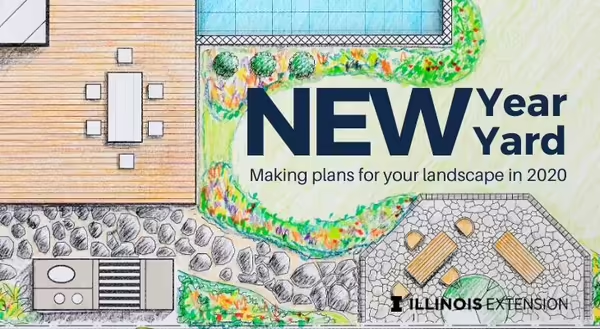
It is now the year 2020. It seems like everyone agrees, saying year “twenty-twenty”, feels so strange. As if we have arrived in a future we’ve only seen in movies and the Jetsons.
As we were preparing for a New Year’s party, my six-year-old asked “Why is New Year’s such a big deal?” I explained, for lots of people, a new year is a time to aspire for something better. Perhaps a change in lifestyle, or to connect more with your community, maybe even reach out to someone. As much as humans can resist change, New Year’s is a time when we embrace change.
To that sentiment, it seems to be a common desire to start a garden as a New Year’s resolution. Or perhaps get outside more often, maybe build that pergola you’ve always dreamed of for the back patio. Now I realize that people can be finicky. Often, we don’t stick to those New Year’s resolutions, and for gardener’s we must hold out until spring and by then I’ve forgotten my resolution in the first place!
So, what can a person do to stay on track with their landscaping goals? Make a plan! A landscape plan to be exact. Draw it out on paper. Pulling an idea out of your brain and putting it out in the physical world, even as a sketch, helps to make it a reality. Measure off your space for your proposed landscape feature and use a ruler to draw it to scale on paper so you can begin to manipulate the vision in your mind toward your end goal. The extra benefit to drawing out your landscape ideas is it helps to foresee possible conflicts with your vision. For instance, if you built your garden beds in a way that made it difficult to mow around, you could see that on a landscape plan.
If you are in a new home or revaluating your existing yard, there are some things to consider. Here are some items to keep in mind when putting together a plan for the coming year:
· Correct any drainage issues. The most urgent drainage issue is any settlement that typically occurs around a home’s foundation or if the entire yard slopes toward the house. It is important to make this priority number one to keep water away from any structures. This can be a tricky and even costly issue.
· Identify and evaluate your trees. Knowing what trees you have and their condition is valuable information. Trees are the largest investments you can make outside of a kitchen and bathroom for your home. Properties with healthy, mature trees, often sell for higher than a comparable property devoid of trees. A certified arborist is your best friend when it comes to evaluating tree health. Your local Extension office can also help with tree ID. Feel free to bring in samples or email me pictures of an unknown tree in your yard. cenroth@illinois.edu
· Use GIS (Geographic Information System) to help build your landscape plan. Most counties in Illinois have a GIS website that has updated aerial photography and property boundaries. Find yours by typing in your county name and “GIS” into an internet search. This is very helpful, especially if you have a larger property. GIS websites usually have measurement tools that can help draw a base map.
· For those wanting to start a vegetable garden, my biggest tip is to start small. It is discouraging when your plants don’t survive. I have been there many times and will undoubtably be there many more times. You must think of it as a learning experience, otherwise it’s just plant murder. At the very least, those who’ve struggled with growing a garden can appreciate the work vegetable growers put into putting food on our tables.
I have a lot more tips to give, but it was hard enough to pull myself away from the yard work to write this article and the winter sunshine is calling to me. I still must finish pilling my shredded leaves on the lawn where I want my future landscape beds. I use my rake to shape the leaf piles in different forms to find my favorite. See there’s another tip! To all of those reading this, I wish you the happiest 2020.
Good Growing Tip: Observation is the best tool to know what existing plants are keepers, and which are duds. Spend time outside with a notebook sketching and jotting down notes of how a space feels. This begins the design process to change an unpleasant space into an outdoor oasis.